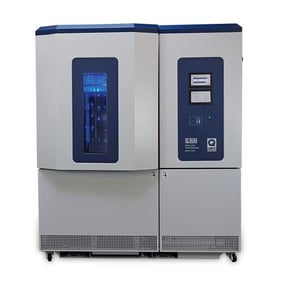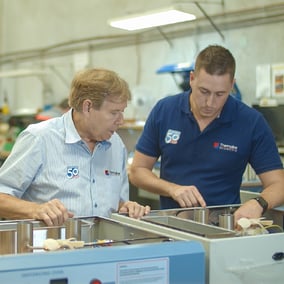
There are many types of laboratory balances on today’s market, and when making a decision to purchase a balance, you need to ensure you are buying for the best outcome possible. Being suitable for the application is by far the most important consideration, taking into account the maximum sample size in relation to the maximum capacity of the balance, the accuracy, and whether it is suitable for your needs. Another consideration is cost; is it auto or manual calibration? What is the service warranty? Does the brand have a good track record for reliability?
In the article below, we go over standard features and applications for Analytical balances, Precision balances, microbalances, Ultra-micro balances, Top loading balances, Moisture analysers and Portable balances. Thermoline offers the Adam range of laboratory balances.
Analytical Balance
An analytical balance is designed and used to measure small masses in the sub-milligram range (typically between 0.01 mg and 1 mg). Analytical balances are usually utilised for differential weighing and interval weighing when used with a PC with special software. Analytical balances are also used for formulation weighing, density measurement, pipette and small glassware calibrations, sample management (tracking) and any other analytical weighing requirements a laboratory might need. A suitable bench and location are critical for the use of an analytical balance. This also applies to the use of micro and ultra-micro balances. They have enclosed weighing pans to prevent air movement from disrupting the result (draft shield)
Precision Balance
High-precision or precision balances are electronic balances used in the laboratory. They can weigh up to 10,000 grams and are readable down to 0.1 grams. Lower-capacity precision balances can read down to 0.001g, and some even have dual range capability. These are also top-loading balances, although in some cases, there may be some form of draft shield.
Micro-Balance
Microbalances are mostly used in laboratories as standalone instruments but can also be incorporated into other instruments, such as sorption/desorption systems, thermogravimetry, and surface property instruments. Their accuracy can range between 1µg (0.000001 g) and 10µg (0.00001 g). They are typically used for weighing particulate matter, weighing stents, calibrating pipettes, analyzing glass elements, analyzing pesticides, and any other critical microweighing applications in the laboratory.
Ultra-microbalance
Ultra-microbalances are designed and used for weighing the smallest samples and high resolutions of up to 0.1µg. These are most often used in the pharmaceutical and biotechnology industries. These balances, more so than the others listed, require a qualified technician to install them onsite.
Top Loading Balance
A top-loading balance is among the most common types of weight-measuring instruments used in the modern laboratory. It is important to note that analytical and precision balances are also top-loading balances. Top loading balances are available to purchase in a variety of pan sizes and weight capacities, from 200 g to several kilograms. Top loading balances are typically used in the laboratory to weigh solid material when an accuracy of 0.1-0.01g is adequate.
Moisture Analysers
Moisture Analysers determine moisture or solid contents with either infrared or halogen heat sources. They are designed to be accurate, fast and easy to operate. These instruments are the perfect way to measure the moisture content of materials such as grains, pharmaceuticals, soils, sludge, chemicals and much more. The weighing range goes down to 1mg on many moisture analysers.
Our Thermoline sales team will be more than happy to answer any questions you may have, so please don’t hesitate to contact them.






